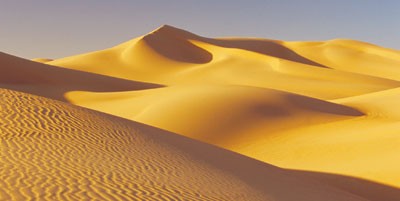Play all audios:
Ralph Bagnold's wartime posting to map the dunes of North Africa was like a desert epic — and it inspired his classic text on how wind-blown grains self-organize into regular patterns,
explains Philip Ball. Access through your institution Buy or subscribe This is a preview of subscription content, access via your institution ACCESS OPTIONS Access through your institution
Subscribe to this journal Receive 51 print issues and online access $199.00 per year only $3.90 per issue Learn more Buy this article * Purchase on SpringerLink * Instant access to full
article PDF Buy now Prices may be subject to local taxes which are calculated during checkout ADDITIONAL ACCESS OPTIONS: * Log in * Learn about institutional subscriptions * Read our FAQs *
Contact customer support AUTHOR INFORMATION AUTHORS AND AFFILIATIONS * Philip Ball is a consultant editor for Nature. His forthcoming book series is Nature's Patterns: A Tapestry in
Three Parts., Philip Ball Authors * Philip Ball View author publications You can also search for this author inPubMed Google Scholar RIGHTS AND PERMISSIONS Reprints and permissions ABOUT
THIS ARTICLE CITE THIS ARTICLE Ball, P. In Retrospect: the physics of sand dunes. _Nature_ 457, 1084–1085 (2009). https://doi.org/10.1038/4571084a Download citation * Published: 25 February
2009 * Issue Date: 26 February 2009 * DOI: https://doi.org/10.1038/4571084a SHARE THIS ARTICLE Anyone you share the following link with will be able to read this content: Get shareable link
Sorry, a shareable link is not currently available for this article. Copy to clipboard Provided by the Springer Nature SharedIt content-sharing initiative

